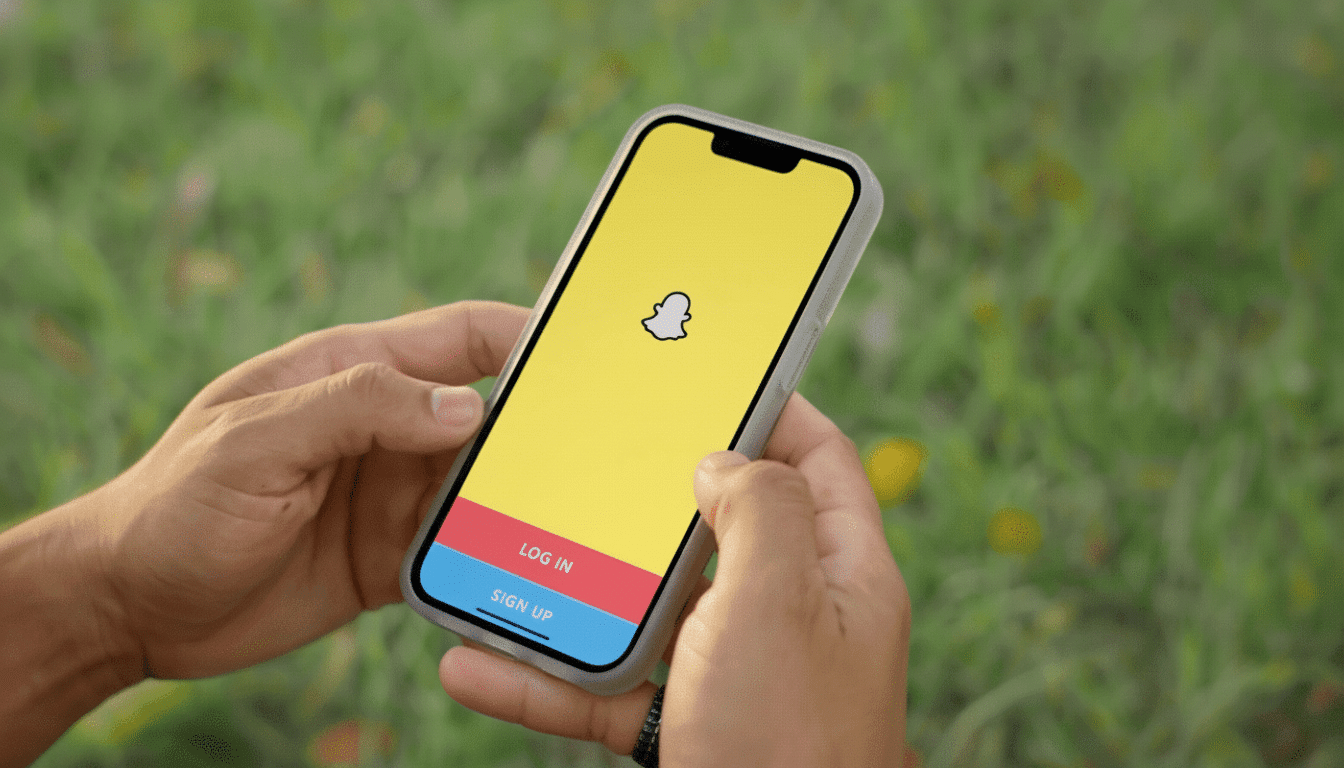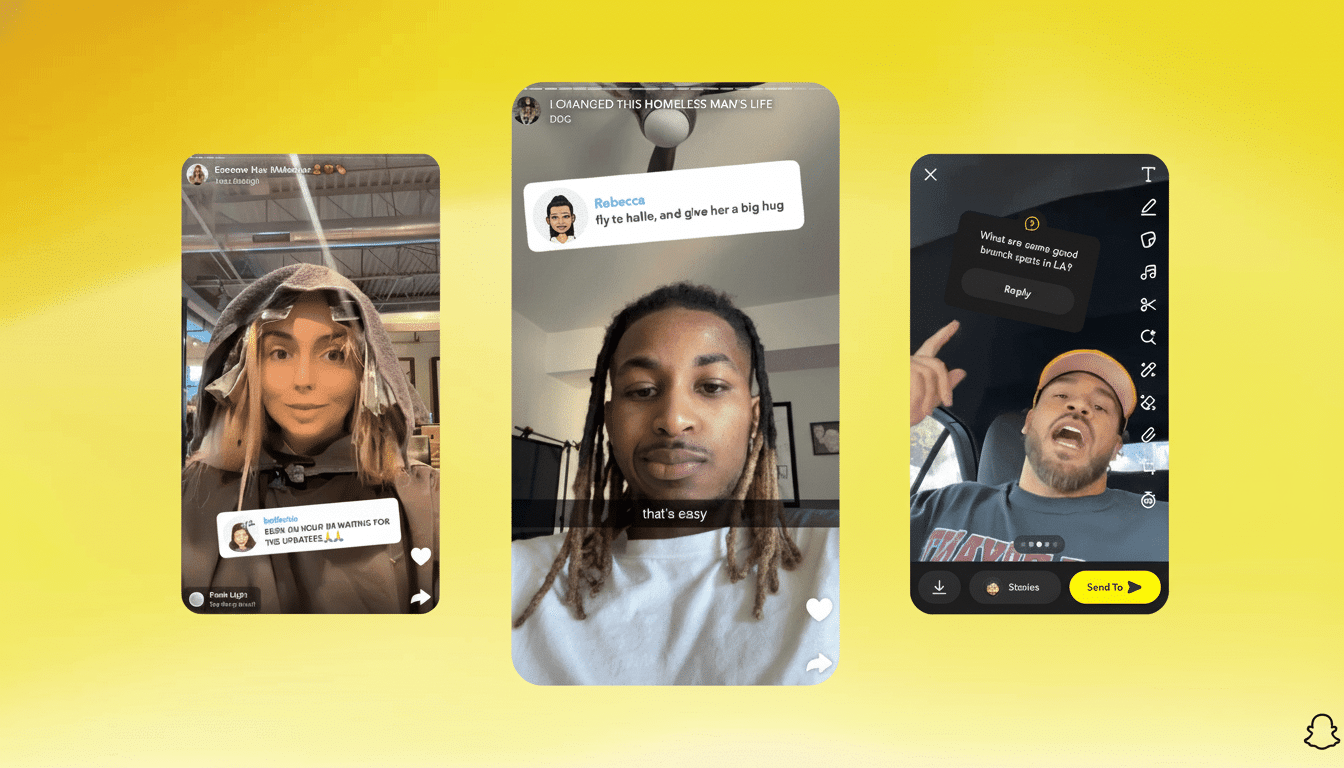Snap is making the first open prompt image-generation Lens, called Imagine, available to all United States users for free. The tool, which is launching for its paying subscribers first and foremost, allows people to type in a description and then immediately modify their selfie or generate a brand new image from scratch (bringing generative AI directly into Snapchat’s core camera experience).
Image generations will be offered for free to a limited group of users and non-subscribers, with wider rollouts expected in other markets including Canada, Great Britain, and Australia. The move highlights Snap’s broader strategy to plant the seeds of mass usage and keep its creative tools close to where its audience already spends time: the camera and the chat.

What Open Prompt Means on Snapchat’s New Imagine Lens
Open prompt means you describe what you want, and the Lens figures it out. Imagine “turn me into a neon astronaut” post-selfie, or “a sleepy golden retriever in a raincoat” for something completely new. You edit on-screen prompts, select from suggestions when you’re stuck, and then share results with friends (and Stories), or outside the app.
Imagine can be found near the front of the Lens Carousel and can be searched for by name. Whereas themed AR filters lock you down to a single look, this Lens is a blank slate — it can augment your Snap with anything you choose or bring an entirely new scene into existence based on text input.
Why Snap Is Doing This Now with Imagine’s Rollout
AI has transcended novelty.
Instead of simply serving up information, it is teaching us about those who use it.
Competitors are rushing to bake creation tools into feeds and cameras, with Meta emphasizing AI-powered creative effects and OpenAI showing off high-fidelity video synthesis in Sora. Snapchat’s solution is to make AI image making as easy as flipping to a Lens — no separate app, no export acrobatics.
And there is a scale thing. Snap has long claimed that its community interacts with Lenses billions of times a day, and the camera was a trusted distribution point for new technology. In previous partner and investor presentations, the company has emphasized a strong creator ecosystem in Lens Studio, with millions of community-made Lenses and a sizable base of AR creators. And injecting open prompts right into that flow could speed up both experimentation and daily streak-friendly utility.

Opening up access economically while limiting the free generations allows Snap to control compute costs and trial demand without devaluing paid tiers like Lens+ and Snapchat Platinum. If history with premium features holds, wider adoption can contribute to ad formats and sponsorships down the road, especially around cultural moments like Halloween, sporting events, and movie releases.
Quality, safety, and responsibility for Imagine AI use
The usual questions come up with open-ended prompts: realism, safety, and misuse. Snap already imposes both policy and technical guardrails on its AI features, and Imagine is no different. Also, anticipate filters and age-related protections that comply with the company’s Community Guidelines for violent, sexual, or otherwise prohibited content.
Labeling is another pillar. Industry groups such as the Partnership on AI and the Coalition for Content Provenance and Authenticity have called for clear disclosures and provenance signals for AI media. Snap has previously emphasized the need for transparency in its AI experiences, and it is likely that Snap will also continue to surface visible indicators when content has been AI-generated or -edited — a practice regulators and watchdogs around the world have come to expect more of.
What it means for creators and brands using Imagine
For creators, open prompts inevitably shorten the distance between inspiration and a post. Rather than scanning for the right filter, you build up the effect with language and iterate swiftly by editing a word or two. That loop works in tandem with Lens Studio workflows, too, where creators might prototype looks and motifs that prompt-driven users will organically magnify.
Brands will watch this closely. Other generative effects related to product launches or seasonal campaigns are set to become “sponsored prompts,” an evolution of branded Lenses. The key will be consistency: AI-generated output can run the gamut, so marketers may want guided prompts and prescreened examples to weigh creative freedom against brand safety and performance.
How to try Imagine on Snapchat’s camera and Lenses
Open Snapchat, tap the camera, and swipe to the Lens Carousel. Look for Imagine close to the front or search by name. Tap the caption to insert your prompt: choose from prompts suggested for you if you need a little inspiration, and GO. U.S.-based free users will be able to generate a limited number of images, with additional regions coming soon.
The takeaway is simple: By putting open prompt AI in its default camera, Snap is transforming ordinary moments — costume tests, reaction shots, speedy one-liners — into a live canvas for generative creativity. If the company can ensure quality and safety at scale, Imagine could be as habitual as any other Lens flick — and a toehold for how young audiences frolic with AI in their everyday messaging.

